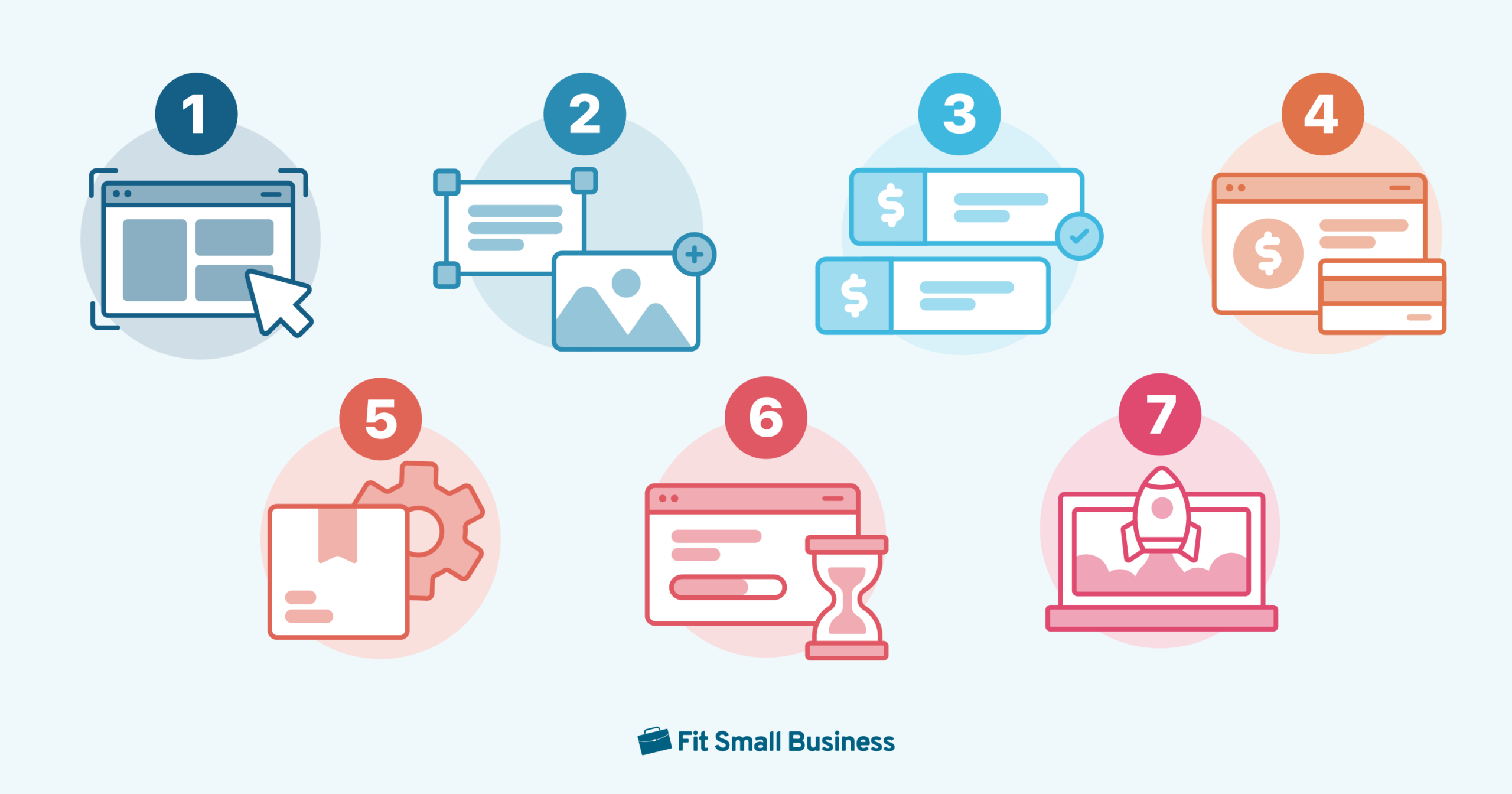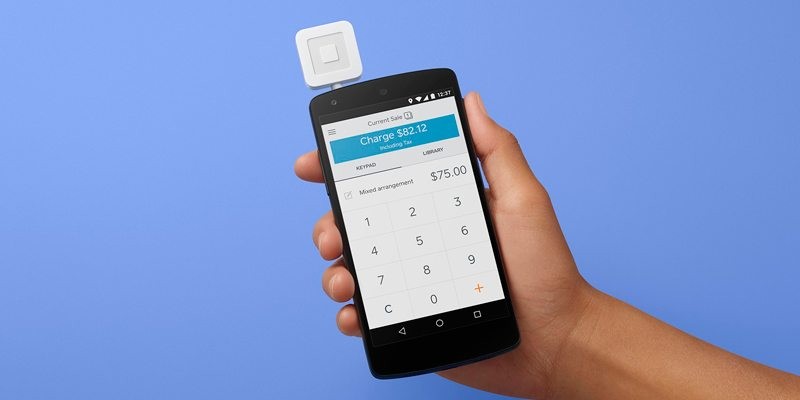
As an artist, you may have specific visions for your work, its presentation, and even your future business. And, up until this point, you’ve likely sustained your artistry through pure passion alone. However, if you want to turn that passion into income and sell art online, it’s time to take the following steps.
Step 1: Make Sure You’re Ready
Turning your passion into profit isn’t suitable for everyone. For many, keeping art as a healing, stress-free hobby is the best way to get the most enjoyment out of their craft. Suppose you’re just looking for a way to showcase your portfolio, sell some extras, or get the occasional commission. In that case, you can likely set up a website with online ordering or a contact form for commission inquiries and call it a day.
However, if you want to make the plunge, here’s how to know selling your art online is right for you:
- You’re good at staying on top of details and handling administrative tasks: You’ll spend a lot of time communicating with clients and customers, budgeting, scheduling, and managing orders.
- You have a clear vision and niche: In other words, a cohesive brand that you can market and pieces your audience can connect with.
- Your finances are in order: Before launching a business, you must have your personal health together—including financial. It will likely be some time before your new venture reaches profitability, so be sure you can weather the storm.
Related: How to turn your art practice into a business
Step 2: Create a Plan
If your goal is to turn your artistry into your primary source of income, you will need to dig deeper to develop a business plan, marketing strategy, and path to profitability.
But, don’t fret—the online art industry in the US reached a market size of over $5 billion in 2023. The demand is there; you can make money by serving buyers well—just like any other business.
If you decide to pursue selling art full time, think about it like any other business venture with questions such as:
- What problems do customers have that you can solve for them?
- How can you find out exactly what they want? What niches can you serve?
- What are the industry trends? What’s popular in the art world right now?
- How can you get the artwork into buyers’ hands?
- Will you be able to adjust and adapt if they change what they’re asking for?
As with any other business venture, you need to start by being clear about what you’re offering. Will you be creating physical art or digital art? And from there, how will you get your products into the hands of your customers?
If you want to develop a successful business based on selling your artwork, keep in mind you may have to make some compromises along the way. You may feel a tension between your creative visions and business realities. Having a solid plan in place will help guide you through.
Related: How to Start a Small Business: An Ultimate Guide
Step 3: Choose Your Platform
If you’re selling physical prints of your artwork, local printing shops or print-on-demand services are your best bet. They can manufacture or print as many or as few products as required, manage inventory levels for these products, and fulfill customer orders.
Once you choose a print-on-demand service, give them a high-quality image of your art to work with and discuss inventory management, fees, shipping, and fulfillment with them.
If you choose to sell digital art, printing won’t be necessary. However, you will need to:
- Create high-resolution scanned images of your artwork as a basis for making digital copies
- Get a good website and ecommerce platform to showcase and sell your work
Regardless of whether you’re selling physical or digital art, you will need a platform for selling your art online. There are essentially two options: list on a marketplace or build your own website.
List on a Marketplace With an Existing Audience
If you want to avoid creating your own website or online selling platform to display and sell your work, you can opt for an existing one. Examples include:
- Etsy: Etsy is a marketplace specializing in handmade or vintage items, including art. Etsy charges $0.20 for each listing, and you’ll need to handle shipping yourself if you are selling physical artwork.
- Saatchi Art: Saatchi Art offers free-to-create accounts, shipping services (you still need to pay for packaging), and portfolio tools. Curators are also available to review artwork and make client referrals.
- Amazon Handmade: Amazon Handmade is explicitly designed for selling handcrafted or artisan goods, including artwork.
- Instagram Shopping: Instagram has a set of storefront features specifically for ecommerce, called Instagram Shopping. Visitors can view and buy your products, including photos and videos. You can categorize products for easier browsing, as well as add product tags that show up in your Instagram feed and stories.
- Society6: Society6 is an artist-driven online marketplace. You can choose from between three monthly subscriptions (one of which is free), and enjoy features like wholesale and trade programs, customizable shops, worldwide shipping, customer support, and analytics. Society6 handles printing, shipping, and customer support for every order.
- Redbubble: Redbubble is an online marketplace in which users can submit artwork that is turned into print-on-demand designs on products like clothing, mugs, and phone cases. Your work will be visible to a global audience, and the print-on-demand model means that you won’t have to worry about inventory costs or management, or shipping.
- Fine Art America: Fine Art America is an art and photography community and online marketplace. You can create a portfolio of your work, sell products via print-on-demand or branded web stores, network with other members, and use the platform’s sales and marketing tools to increase your profits. Fine Art America will handle both packaging and shipping for physical artwork, via their global fulfillment centers.
Build Your Own Website
If you want a custom website that displays your work, aesthetic, and brand in as personal a way as possible, you can build your own website from which to sell your artwork.
You can choose to build this site either from scratch via coding, or by using a website builder (options exist specifically for artists and photographers). Our top overall recommendation is Weebly; it features a drag-and-drop website editor, grid-based gallery, and lots of visual themes to choose from. Even Weebly’s free plan includes full ecommerce functionality, plus an Instagram feed integration which is great for marketing your work.
If you choose to use a website builder to create your own site, look for these features:
- Enough storage space for lots of high-resolution images and scans of artwork
- Ability to connect a custom domain (to remove ads and build a good brand image)
- Integrations with social media and instant messaging
- Easy-to-use editing tools (drag and drop) for designs and themes
- Ecommerce features in all subscription plans
Step 4: Price Your Artwork
Setting prices for the products and services you offer is often tricky, and it can be all the more so when selling artwork. Art is subjective, and different customers may value your work at very different levels. If you price too low, you might not make enough profit to keep your art business running, leading to burnout and failure; if you price too high (especially early on), you may drive away potential buyers.
That said, there are a number of factors you can consider to price your artwork at a fair and reasonable level that still yields a profit.
Factor in All Costs
As you know all too well—art supplies are expensive. When pricing your work, factor in material costs, marketing fees, and shipping costs. And don’t forget to factor in the time you’ve spent creating the piece.
If you want to create a sustainable business selling art, each piece you sell must earn you enough to cover all the costs involved in creating and delivering it—plus a profit on top.
Read more:
Assess What You Are Offering
Make an honest assessment of your own level of skill and experience when creating your art. How does your work compare in quality to similar work by other artists? Is your technical skill apparent? Can you honestly say (and defend) that your work is superior to others?
As your skill level and reputation grow, you can increase your prices. If your artwork serves a particular niche audience and you don’t have much competition there, you may be able to charge higher prices as well.
Consider Whether and When to Offer Commissions
Commissioned artwork—in which you create a custom piece for a particular client—has advantages and disadvantages. You’ll be justified in charging a higher price for commissioned art because it is custom-made, and your reputation will grow significantly if your work is good.
However, you’ll also face additional pressure, deadlines, and possible difficulties in collaborating with your client to realize their vision.
Related:
Step 5: Market Your Artwork
As with any other business, marketing is vital if you intend to profit from your artwork. Variety is also key here; you’ll get the best results if you use many different avenues to increase awareness of your work. Here are some ideas:
Build a Portfolio to Showcase Your Work
The bread and butter of marketing yourself as an artist is to build a portfolio of your work for potential clients to view. A good ecommerce platform (whether existing or created via website builder) will have a space in which you can display all your previous work.
Your portfolio exists to give viewers a concrete idea of your artistic skill and style, encouraging them to buy your pieces or even approach you for commissioned work. You may be able to include testimonials from previous buyers in your portfolio as well, increasing the perceived value of your art via social proof.
Online portfolios can be simple websites showing off your work, or they can be as creative and unique as you want. The website design of abstract painter Rayhart’s portfolio includes their own artwork. (Source: Rayhart)
Leverage Social Media Marketing
Nowadays, you’re missing out if you don’t leverage social media to market your products—and art is no exception. Popular platforms like Facebook, Instagram, and TikTok are great options for getting your work in front of as many eyes as possible. Hundreds of dedicated public groups and channels exist for displaying art of every conceivable category.
Displaying and promoting your work on social media is an affordable, easy, and fast way to show off your talents to a wide audience. (Source: Pexels)
You can also create your own brand account or profile to show off your portfolio. If your website has social media integrations (it should!), then you can connect all your online spaces to display your art to as many visitors as possible.
Learn more:
- How to Advertise Your Business on Facebook (Beginners Guide)
- How to Create a TikTok Marketing Strategy (+ Examples)
Engage With Buyers and Viewers
Social media and websites don’t just exist to let visitors quietly look at your work. You’ll achieve higher viewer interest and engagement if you talk to your audience. Encourage viewers to leave comments and feedback on your portfolio pieces. Respond to questions on your social media accounts. Consider starting a blog about your inspirations, history, art styles, and ambitions—and expand on these with anyone who leaves a comment.
Driving engagement up like this will tell people that you’re serious about your craft, want to improve your skills, are open to feedback, and are not just in this to make a quick buck—all of which will encourage them to support your work.
Collaborate With Other Artists and Groups
Marketing yourself alone can be a long, slow path to success. You can speed things up by collaborating with other artists or groups that are already known in the art community.
The key is to do this in a natural and organic way; don’t insert yourself into an artist group and act like you own the place. Instead, join groups and communities to get to know fellow artists, appreciate their work, give your own thoughts and feedback, and receive theirs as well. Feel free to show off your work—that’s how you’ll get feedback, after all—but don’t chase fame or money.
Once you’ve spent some time making a bona fide effort to integrate into the community and improve your skills, other artists in the group will begin to mention and recommend you to viewers and clients. Or visitors may approach you directly and ask about buying your work or commissioning something. As your reputation in the group and in the larger community improves, you can slowly start increasing your direct marketing efforts.
Step 6: Fulfill Customer Orders
How you fulfill customer orders will depend on whether you sell physical or digital works. It will also depend on your sales platforms and whether or not those companies handle the fulfillment.
Physical Artwork
You’ll need to handle packaging, shipping, tracking, and customer queries for physical copies. Several of the existing ecommerce platforms listed above will handle packing and shipping for you, but in other cases, you may need to do this yourself.
You’ll need to package your art properly in containers that protect it from exposure to the elements and physical damage like rips and tears. Mailing tubes are your friend here; they’re a convenient and cost-effective way to get physical copies of your artwork to buyers anywhere.
Next, you’ll need to find a courier service that delivers artwork. DHL Express and FedEx both ship artwork, but will not ship pieces with individual values over a certain amount. Check the websites of your chosen courier service to ensure they deliver artwork, and whether any rules or restrictions apply.
If you can have your art drop-shipped to buyers via a print-on-demand service rather than producing and storing many physical copies of your work, then do so; this model will save you a lot of headaches in terms of mass-production, inventory management, and storage.
Related:
- How to Choose Packaging for a Product
- Best Sources for Cheap Shipping Supplies
- Cheapest Way to Ship a Package
- Buy Postage Online in 3 Easy Steps
Digital Artwork
Sending digital art to your buyers is relatively simple: You can share the files via sites like Google Drive or store and send your work on USBs or external hard drives.
You can also opt to use a photo gallery or image hosting service, for which there are many free and paid options online. Popular choices include DeviantArt, Flickr, Imgur, and Pinterest. As with building your own website, look for useful features such as adequate storage and space and upload limits, ad removal, statistics and analytics, and integrations for social media and communicating with visitors.
Fulfilling commissions
Fulfilling client commissions (as opposed to creating the artwork you want and then selling it) comes with some crucial points to remember, whether the artwork is physical or digital. The main consideration with fulfilling commissions is that they will require much more frequent and thorough communication with your client.
Once you’ve accepted a commissioned task from the client, you’ll need to align with them on these points:
- Deadlines: When is your client expecting the completed work? Are extensions possible? Remember to factor in delivery times for physical artwork—the day you complete the work will not necessarily be the same day the client receives it.
- Revisions and edits: Will you allow your client to request revisions and edits to the finished product? If so, what deadlines can you work with? How extensive of a revision task will you accept? Will you be charging additional fees for making these changes?
- Delivery methods: Is the artwork digital or physical? For digital art, agree with your client on details of the delivery method, such as the file type. For physical art, agree on a courier service you both trust. If the finished product is something fragile, bulky, or irregularly-shaped (such as a statue or carving), take this into account when deciding on packaging and delivery.
- Payment: Don’t shy away from ironing out the details of payment early on. How much will you charge for the custom work? What payment methods will you accept? Do you prefer to be paid before you begin working, or after you’ve finished? Will you accept installments?
As with any business venture, thorough communication with clients is essential for a successful and profitable business relationship—especially when it comes to commissioned artwork. (Source: Pexels)
Commissioned work can be lucrative, challenging, and enjoyable—as well as a great way to improve your artistic skills. Don’t let vagueness and misunderstandings spoil these opportunities; clarify all the points above with your client before you commit to working on the piece.
How to Sell Art Online: Frequently Asked Questions
Click through the sections below to learn more about how and where to sell art online, and how much money you can make.
Create a business plan for selling art; choose an ecommerce platform to host your artwork; price your work appropriately; market your artwork via portfolios, social media, and collaboration; and fulfill physical and digital client orders.
The best site for selling art depends on many factors, such as how much you are willing to pay, what features you’re looking for, whether you want to handle fulfillment or outsource it, and more. Etsy, Society6, and RedBubble are popular platforms.
How much money you make selling art online depends on your skill and experience level, the cost of materials and productions, any specialty niches you decide to create art for, and whether or not you offer commissioned work. Marketing yourself effectively will go a long way toward justifiably increasing the price of your work.
Bottom Line
Art is usually considered a creative hobby, and it can certainly remain that way or be used for occasional sales to make a few extra dollars. But if you want to turn your artistic inclinations into a full-time business, it can be done—and if you follow the steps in our guide, you may find yourself in the sweet spot of doing what you love, and getting paid for it.




![how-to-start-a-bookkeeping-business-[+-free-checklist]](https://zabollah.com/wp-content/uploads/2024/07/25015-how-to-start-a-bookkeeping-business-free-checklist.jpg)
